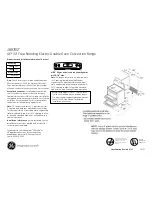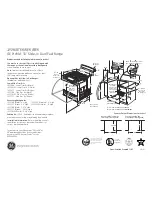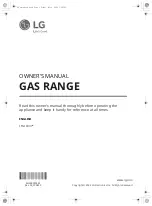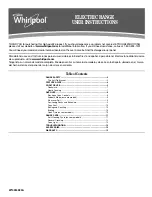
Safety
English 3
•
In the event that personal clothing or hair catches fire, drop and roll immedi-
ately to extinguish flames.
•
Smother flames from food fires other than grease fires with baking soda.
Never use water on cooking fires.
•
Take care that drafts like those from fans or forced air vents do not push the
flames so that they extend beyond the edges of the pan.
WARNING:
TO REDUCE THE RISK OF INJURY TO PERSONS IN THE EVENT OF A
RANGE TOP GREASE FIRE, OBSERVE THE FOLLOWING:
a) SMOTHER FLAMES with a close-fitting lid, cookie sheet, or metal tray,
then turn off the burner. BE CAREFUL TO PREVENT BURNS. If the
flames do not go out immediately, EVACUATE AND CALL THE FIRE
DEPARTMENT.
b) NEVER PICK UP A FLAMING PAN - You may be burned.
c) DO NOT USE WATER, including wet dishcloths or towels - a violent
steam explosion will result.
d) Have an appropriate fire extinguisher available, nearby, highly visible and
easily accessible near the oven.
e) Use an extinguisher ONLY if:
1) You know you have a Class ABC extinguisher, and you already know
how to operate it.
2) The fire is small and contained in the area where it started.
3) The fire department is being called.
4) You can fight the fire with your back to an exit.
•
Whenever possible, do not operate the ventilation system during a cooktop
fire. However, do not reach through fire to turn it off.
WARNING:
TO REDUCE THE RISK OF A RANGE TOP GREASE FIRE:
a) Never leave surface units unattended at high settings. Boilovers
cause smoking and greasy spillovers that may ignite. Heat oils
slowly on low or medium settings.
b) Always turn hood ON when cooking at high heat or when flambéing
food (i.e. Crepes Suzette, Cherries Jubilee, Peppercorn Beef
Flambe').
c) Clean ventilating fans frequently. Grease should not be allowed to
accumulate on fan or filter.
d) Use proper pan size. Always use cookware appropriate for the size
of the surface element.








































